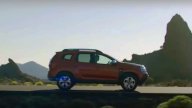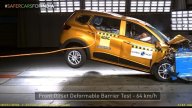Why didn't Renault India launch the new Logan instead of doing a Scala?
 The next generation Renault Logan, codenamed X57, is currently finishing tests in Europe. Likely to premiere in March 2013 at the Geneva Motor Show, it should have been Renault India's representative in the mid-size sedan segment.
The next generation Renault Logan, codenamed X57, is currently finishing tests in Europe. Likely to premiere in March 2013 at the Geneva Motor Show, it should have been Renault India's representative in the mid-size sedan segment.
This is the voice of so many Indian Autos Blog readers. But why was this obvious choice was overlooked?
The new Logan, much like the predecessor, is a compact car, has a 1.5L diesel engine, is designed to be an emerging-markets car and its predecessor has done well even in India in both its innings, albeit in patches.
So why doesn't Renault India hang on for a few months and introduce the new Logan instead of dressing up a Sunny?
The answer is simple, but long. It lies in the way Renault-Nissan conducts business in India.
A maturing Logan
Unlike the current Logan which is based on a B-Platform that is shared with many models within the group, the new Logan is based on the C-Platform (shares it with the Fluence, a CKD model in India, and a size bigger). The new Logan is growing up and becoming a bit more premium, it has higher ambitions in Europe, and it won't cost the same anymore.
Imagine the new Logan's transition like the Indica and Indica Vista - the successor was a big departure in every respect. The company aspires to sell something that doesn't look like a refrigerator or a taxicab. They want to value-add and make better margins by pricing it higher.
Even if Renault India are to bring the X57 to India, strip it down, and manufacture it locally, how well they can price it?
Renault has plenty of capacity left at the Tangiers plant (in Morocco where the Dacia Lodgy is made) and in the Pitesti plant (in Romania where the Logan and its sisters are made), so they wouldn't need the services of the Oragadam plant in Chennai to supply for the European countries. These two mega-sized manufacturing facilities can handle the demand of a global model easily, and considering Europe is financially falling apart, there is no immediate need for added capacity.
This leaves the India-made Logan with perhaps only India to look up to for demand.
Multi-faceted strategy
Renault-Nissan's strategy in India is a well-covered one. They manufacture cars in India, and have earmarked most of the capacity for exports. Besides exporting the Micra and Sunny to many parts of the world, they also make Renault versions of Sunny and Micra. They may manufacture the NV200 taxi cab for London. They will also supply Ashok Leyland with customized Evalias under the name Stile for the commercial segment.
The Koleos and Fluence come from Korea and Europe completely dismantled, and packaged into a box. The Chennai plant will just have to put the pieces together and dispatch to dealers. The Duster has good levels of localization - almost 80% by the time the efforts complete. The Duster will be exported to many Right Hand Drive markets, including high volume ones such as South Africa and the U.K. In the next few years, exports will make up a big chunk of local production.
It is easily understandable that Renault-Nissan wants to give every project more than one opportunity - either market wise or brand wise. Overall, the Renault-Nissan alliance plant in Oragadam is an export base, and a small percentage of cars are set aside for India.
Lack of progression
The 2013 Renault Logan may not fit into this strategy. It does not share components with any other locally manufactured car in India. Even if it can be made here for a competitive price, there is no future for it. The next gen Sandero, based off the same underpinning, has to sit in the B+ Segment. However Renault already has charged the Pulse with the task of competing in that space.
Renault can't build another sedan using the same components, as they have the Fluence plying this route. They can't build an SUV, as the Duster's positioning makes the addition feel unnecessary. There is no scale and when you pin all your hopes on one model, chances are you will go bust even if your model is doing respectable volumes.
Looking 5-8 years ahead, the next generation Nissan Micra and Sunny will continue using the same V-Platform, with a new design. This automatically culls the possibility of the next gen Scala and Pulse moving to the C-Platform.
Perhaps later in the decade, the Indian market may have expanded to a considerable extent that most players can afford to do a Maruti - have multiple cars in the same segment. India may develop a liking towards luxury sedans and hatchbacks that most car manufacturers would rationalize C-Segment cars for us. Maybe then the time is right for the launch of the new Logan and Sandero.




